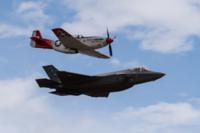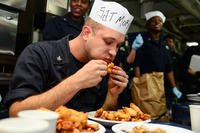By June 1944, Capt. Daniel Gallery and the escort carrier USS Guadalcanal were in the middle of their second hunter-killer mission. The Guadalcanal and its destroyer escorts USS Chatelain, USS Flaherty, USS Pillsbury and USS Pope had already taken out two German U-boats and were on the hunt for a third. This submarine, however, would have a different fate. Capt. Gallery wanted to capture one and was certain he could do it; he even had boarding parties at the ready.
When two of the Guadalcanal's F4F Wildcat aircraft spotted a U-505 off the coast of Cape Verde, Gallery knew he had his chance. Not only did he have boarding parties ready, he had a film crew standing by to capture the moment: the moment when the U.S. Navy captured its first enemy warship at sea since the War of 1812.
"Codename Nemo: The Hunt for a Nazi U-Boat and the Elusive Enigma Machine" is a new, exhaustively researched book from journalist Charles Lachman that tells the whole story of the capture of U-505, using records and interviews from both the American and German points of view.
"'Codename Nemo' is my first military-oriented book," Lachman, a former reporter for the New York Post, Fox and "Inside Edition," told Military.com. "I love reading and writing nonfiction thrillers. I felt this story had everything I was looking for in terms of this extraordinary military engagement. It had great characters, great villains, great American heroes, extraordinary action and great material that really told the story with a great fast-paced narrative."

U-505 is a museum ship in Chicago nowadays, having been restored and housed at the Museum of Science and Industry since 1954. During World War II, however, it was a fearsome enemy. The battle for control of Atlantic Ocean shipping lanes was the longest continuous military campaign of the war. In the early years, German U-boats wreaked havoc on Allied shipping. But as time went on, American escort carriers could provide cover for convoys on the Atlantic crossing, which devastated German U-boat operations. Still, an enemy submarine was a dangerous opponent.
Meanwhile, life aboard a German submarine was harsh. Some 50 men were crammed into a combined space, sharing two toilets and air made foul by their inability to shower or change clothes, and the constant diesel fumes from its engines.
To make matters worse, the war wasn't going well for Germany, and conditions were even more dire for submariners. Advances in radar, aircraft and convoy protection meant few successes for them, and a failure meant certain death. Allied anti-submarine tactics were so good, U-boat commanders would resurface only at night for fear of attracting attention.
With that in mind, capturing a German submarine might not seem like a great idea, but Capt. Gallery was convinced it was not only possible, but necessary. The U-boats contained a trove of valuable intelligence information, including the holy grail of Nazi Germany's secrets: the Enigma machine, the device used to encode secret military communications. Gallery felt as though capturing an Enigma device could be the key to winning the war.

"It shows you what a brilliant naval strategist he was," Lachman said. "He felt that once you engage a U-boat in battle, you didn't necessarily have to blow it up into pieces straight away. You could force it to the surface with depth charges and hedgehog mortar shells, and also aim enough small arms fire to force the crew to abandon ship. The whole point was to obtain the potential gold mine of intelligence the German sailors had."
It was June 4, 1944, when the Guadalcanal and its task force made sonar contact with U-505 off the coast of what is today Western Sahara. Within seven minutes, the sub was struck by depth charges and hedgehog mortars and forced to surface. Believing the U-boat was lost, its captain ordered the crew to abandon ship. They did, but in their haste failed to set the detonation charges that would scuttle the ship. They even left the engines running. Gallery saw his chance to capture it, and sent a boarding party.
"The boarding party fully expected to have a shootout with the German sailors on U-505," said Lachman. "They were told that even if everything went according to plan, there were likely German sailors still aboard. And not only that, naval intelligence informed them that there were 14 demolition charges that were scattered about and set within 15 minutes of the Germans abandoning ship. So it was really a suicide mission that they were facing."
Members of the American boarding party didn't face opposition, however. They took care of the demolition charges, captured the intelligence material and even plugged the leaks and prepared to tow U-505 back to a friendly port.
Capt. Gallery had just led the U.S. Navy's first successful capture of an enemy ship at sea since the USS Peacock took the HCS Nautilus in 1815. The Navy should have been overjoyed, but it wasn't; Adm. Ernest King thought the capture might alert the Germans their codes had been broken.

What Gallery didn't know is that the Allies not only already had an Enigma machine, but that they'd broken the code and were reading German communications, one of the Allies' most closely guarded secrets.
"Gallery told a handful of top-level people in the Navy about his plan," Lachman said. "He was taken to naval intelligence, who briefed him on what could be found inside a U-boat, but it never reached the level of Fleet Admiral Ernest King. He actually threatened to court-martial Captain Gallery. It was only when he calmed down that he realized this was a U.S. Navy triumph. And then Captain Gallery became a hero.
"I think this book provides a fuller understanding about the Battle of the Atlantic, the U-boat menace and how close the Nazi submarine fleet came to strangling the Allied war effort," Lachman continued. "I think it's great that the nine volunteers for the suicide mission were the sons of immigrants; that's a nice reminder of what this country's all about. It illustrates the Greatest Generation at its best. What I really like about these guys is how humble they were after the war. They didn't really want to talk about the experience. They were quiet men, and all they wanted to do was after the war was over, they wanted to get a good job and raise their families and live humbly. They showed a love of country that I think we could all learn from."
"Codename Nemo: The Hunt for a Nazi U-Boat and the Elusive Enigma Machine" is available now wherever books are sold.
Keep Up With the Best in Military Entertainment
Whether you're looking for news and entertainment, thinking of joining the military or keeping up with military life and benefits, Military.com has you covered. Subscribe to the Military.com newsletter to have military news, updates and resources delivered straight to your inbox.

















